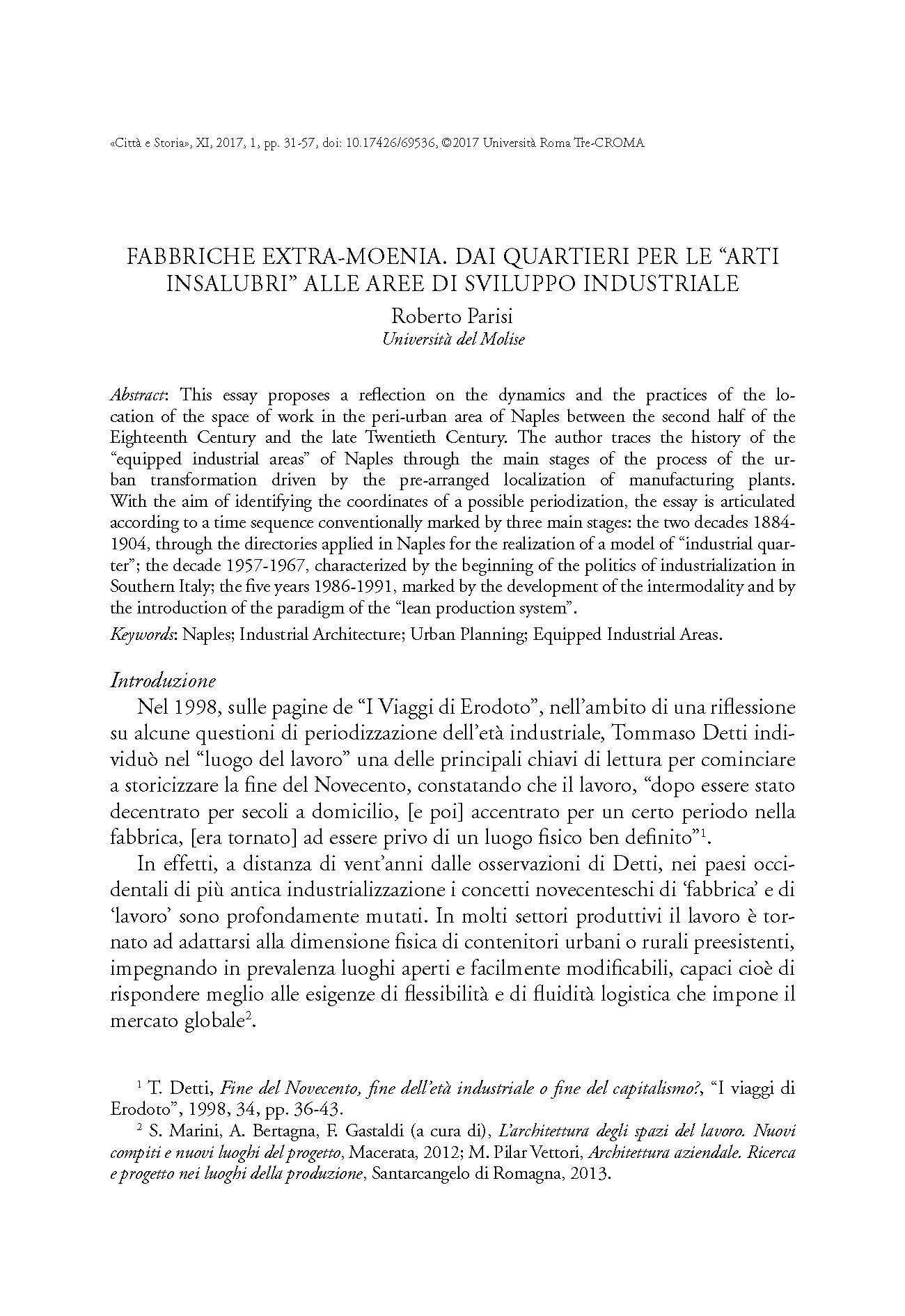Fabbriche extra-moenia. Dai quartieri per le “arti insalubri” alle aree di sviluppo industriale
6,00 €
This essay proposes a reflection on the dynamics and the practices of the location
of the space of work in the peri-urban area of Naples between the second half of the
Eighteenth Century and the late Twentieth Century. The author traces the history of the
“equipped industrial areas” of Naples through the main stages of the process of the urban
transformation driven by the pre-arranged localization of manufacturing plants.
With the aim of identifying the coordinates of a possible periodization, the essay is articulated
according to a time sequence conventionally marked by three main stages: the two decades 1884-
1904, through the directories applied in Naples for the realization of a model of “industrial quarter”;
the decade 1957-1967, characterized by the beginning of the politics of industrialization in
Southern Italy; the five years 1986-1991, marked by the development of the intermodality and by
the introduction of the paradigm of the “lean production system”.
This essay proposes a reflection on the dynamics and the practices of the location
of the space of work in the peri-urban area of Naples between the second half of the
Eighteenth Century and the late Twentieth Century. The author traces the history of the
“equipped industrial areas” of Naples through the main stages of the process of the urban
transformation driven by the pre-arranged localization of manufacturing plants.
With the aim of identifying the coordinates of a possible periodization, the essay is articulated
according to a time sequence conventionally marked by three main stages: the two decades 1884-
1904, through the directories applied in Naples for the realization of a model of “industrial quarter”;
the decade 1957-1967, characterized by the beginning of the politics of industrialization in
Southern Italy; the five years 1986-1991, marked by the development of the intermodality and by
the introduction of the paradigm of the “lean production system”.

